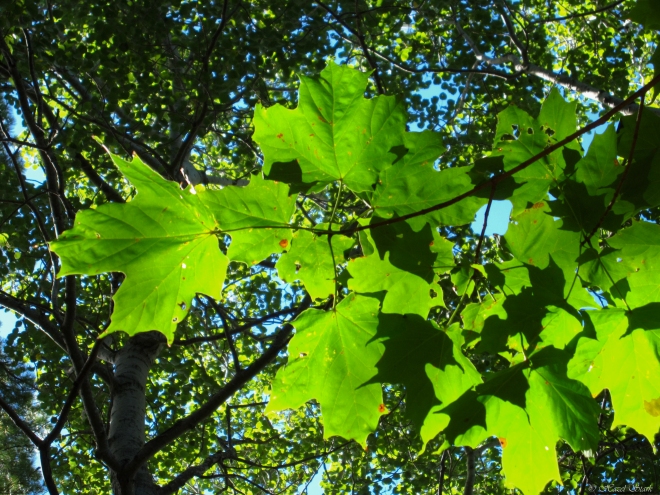
Maples, Acer spp.
Family: Aceraceae, the Maple Family
Description: Native deciduous trees. “Helicopter-fruit,” known as samaras, lobed leaves varying in shape depending on species. A generic maple leaf can be found on the Canadian flag.
Abundance: Varying depending on species; generally common.
Habitat: Various, generally mixed forests
Plant Parts Used: Sap, bark
Food: Syrup
Medicine: Sore throats, irritated eyes, colds, swollen limbs
Other: Moose food, toilet paper
Maples are most famous for one species: the sugar maple, Acer saccharum. This is the tree used for making maple syrup. However, not only can other species of maples be tapped for syrup, but also other species of trees can be tapped for syrup, such as birches. The sugar maple is popular because of its particular sugar content and ease to tap. Maple syrup’s primary use is for pancakes, but this syrup has a variety of other uses. First—a very classic Maine use—is on snow. Instead of ice cream, go outside and take a scoopful of freshly fallen snow and drizzle some local maple syrup on top. Patti suggests combining these two ingredients to make maple popsicles. As a sore throat remedy, Patti makes lemon and honey tea and adds some maple syrup. Growing up, I would drink lemon, ginger, and maple syrup tea to soothe sore throats, colds, and flus.
Besides the famous sugar maple, I heard of several uses for Acer pensylvanicum, commonly called moose, striped, or goosefoot maple (or its less popular common name, “boy scout’s toilet paper,” due to its large, soft leaves). Sue told me that a tea of moose maple bark makes a wash that soothes irritated eyes. Similarly, the Cherokee, Iroquois, Ojibwa, and Potawatomi used a tea of red maple bark (Acer rubrum) for treating irritated eyes. A variety of Native American tribes including the Iroquois, Malecite, and Mi’kmaq used several species of maples to treat sore eyes, blindness, and to remove foreign matter from the eyes. John said that moose maple bark tea can be used for colds or as a wash for treating swollen limbs. The Mi’kmaq also used the bark to treat colds.
Moose, in fact, do love to browse on this small tree—looking for browsed limbs usually six feet high is a good way of knowing whether there are moose in the area.

Note: This post is part of my Plants and People series. See my Plants and People page for more information about the project and the people referenced in this post.
References:
- Brooks, John. Personal Interview. 28 Nov. 2010.
- Chilton, Patti. Telephone interview. 31 Oct. 2010.
- Michener, Martin C. Botany Everywhere: Woods, Field, Home, and Garden Plants of NE USA, Third Edition. Hollis, NH: MIST Software Associates, Inc., 2009. PDF.
- Mittelhauser, Glen H., Linda L. Gregory, Sally C. Rooney, and Jill E. Weber. The Plants of Acadia National Park. Orono, Me.: University of Maine, 2010. Print.
- Reitze, Raymond and Nancy. Personal interview. 8, 15 Oct. 2010.
- Szwed, Sue. Personal interview. 12 Nov. 2010.


My favorite tree!